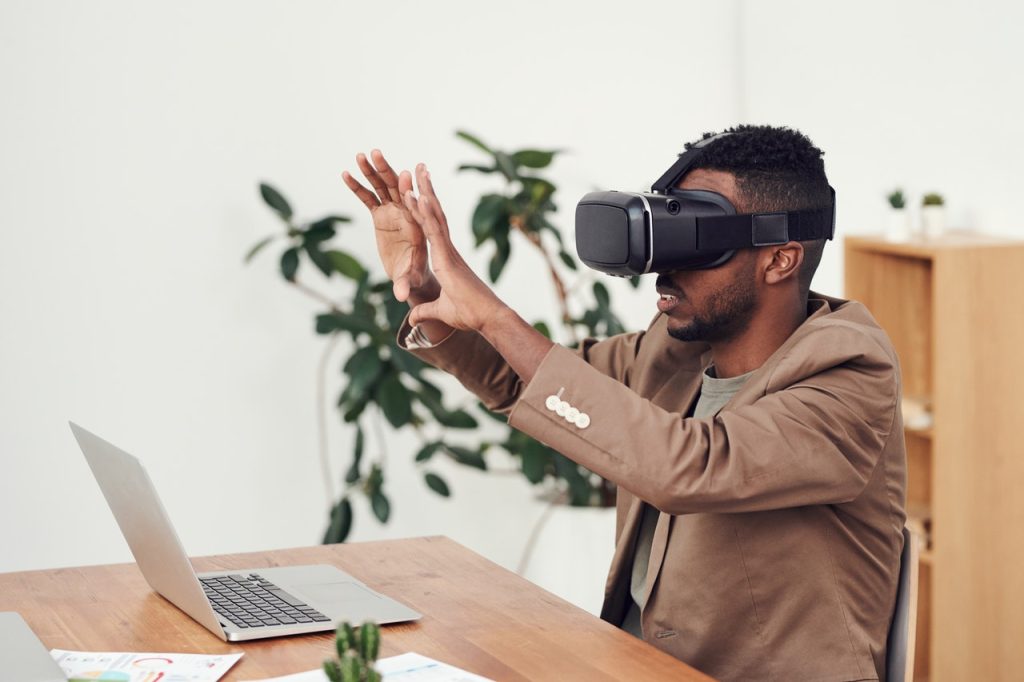In the last few years, augmented reality has been gaining popularity as a way for businesses to create more immersive and interactive experiences for their customers.
Augmented Reality is the term used to describe the technology that layers virtual imagery over a user’s view of the real world
AR has many applications in different areas, including gaming, entertainment, and marketing. Businesses are using the technology across a variety of industries as a way to create more compelling interactions with their customers. Here are just some of the ways it can help businesses.
Increased Sales
Augmented Reality can help businesses increase sales by providing an interactive experience that engages customers and encourages them to purchase products.
For example, IKEA has launched an augmented reality app that enables customers to preview how furniture would look in different rooms before purchasing.
Another example is to use AR for sampling products. A customer at a shop that sells wigs might use AR to see how a hairstyle or wig would look good on them before making a purchase. Similarly, clothing stores use AR in dressing rooms to allow people to try on clothes without wearing them.
It can also help maintain sanitary practices, because the items won’t have to actually be tried on, thus preventing people from wearing something a lot of other people have sampled before.
Improved Customer Loyalty
Augmented Reality can help businesses improve customer loyalty by providing an immersive and interactive experience that encourages customers to return.
One example is the McDonald’s app, which has an augmented reality feature that lets customers play games with the Happy Meal in the store.
Another way to boost customer loyalty with AR is to provide interactive features for users only available through the app. This will motivate consumers to keep coming back, even if they have tried out all the features present in their first visit.
Businesses can even use AR to offer discounts or exclusive products to their most loyal customers.
Brand Awareness
Augmented Reality can help businesses create brand awareness by providing an interactive experience to learn more about the company and its products.
One example is the L’Oreal app, which has an augmented reality feature that lets users try on different shades of lipstick. This gives customers a more in-depth look at the products than they would get from simply looking at a picture online.
Businesses can also use AR to provide behind-the-scenes footage or sneak peeks at upcoming products. This will intrigue customers and make them more likely to learn more about the company and its offerings.
Expands Reach
Augmented Reality can help businesses expand their reach by providing an interactive experience that encourages customers to share information about the company with their friends.
One example is that the IKEA app allows users to preview the furniture and encourages them to share photos of the furniture in their homes on social media. This helps to promote the company and its products to a wider audience.
Businesses can also use AR to create more compelling content for social media. This will help to attract attention from potential customers and encourage them to learn more about the company and its products.

Cost Savings
Augmented Reality can help businesses save costs in many ways.
For example, it can help reduce the need for physical prototypes. With AR, businesses can create digital models of their products that businesses can use for testing and demonstrations.
It can also help reduce the need for physical signage or displays. With AR, businesses can create virtual representations of their products that businesses can display on any surface.
This also eliminates printing out physical versions of advertisements or instructions.
AR can also help reduce the need for customer support staff. With AR, businesses can provide interactive tutorials and manuals that allow customers to find the information they need on their own.
Challenges with AR
It is very expensive and time-consuming to design and build AR apps, prohibitive for small businesses.
There can also be difficulties with the vast variety of augmented reality devices. Some phones do not have a wide enough viewing window or resolution. This can hinder productivity because having a clear view of what is being modeled in AR isn’t always possible.
Further, there could be trouble with people who don’t even know about this technology yet. They might think it’s just another gimmick that tempts them into buying something they may not need or want.
However, AR is still a very good way to promote businesses and their products. If a business has a limited budget, it can develop an app with basic AR features. As the technology advances, the business may be able to invest in more advanced AR capabilities.
Augmented Reality is proving to be a valuable tool for businesses of all sizes. It can help businesses increase sales, improve customer loyalty, and create brand awareness. AR can also help businesses save costs in many ways. However, there are some challenges with implementing AR technology. Despite these challenges, AR is still a very powerful marketing tool.

